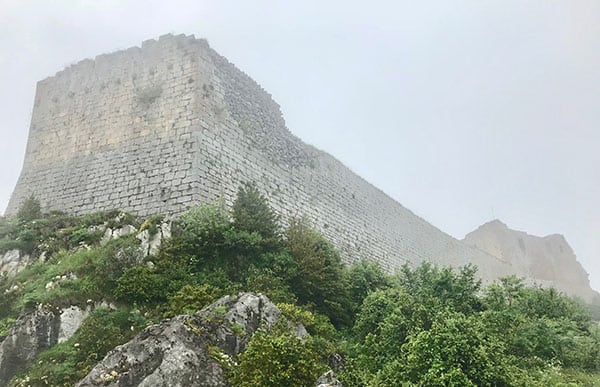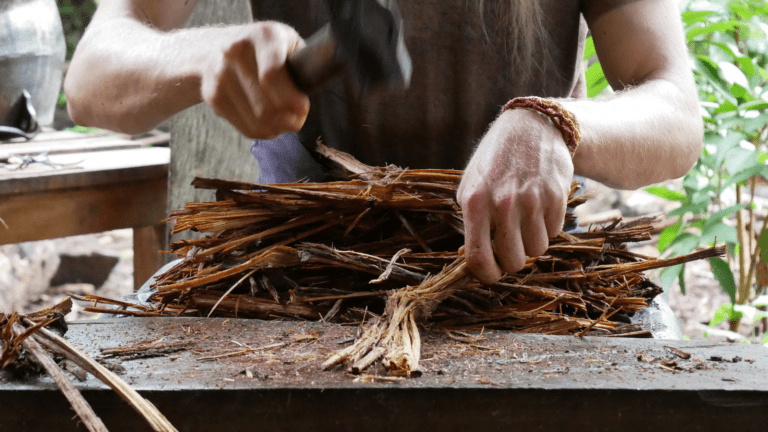South of France is Cathar Country
One of my favorite things about France is the incredible history that surrounds you, from Roman ruins to ancient churches and castles. The first time I came to France in 2015, I had no idea it held two very important secrets. This is the land of Mary Magdalene and the Cathars. Knowing I was coming back this summer, I have been incessantly reading everything I can about Mary M and the Cathars. And now am here to investigate further and experience the sacred sites with greater awareness.
Mary Lived in France
After the crucifixion of Jesus, Mary left the holy land, eventually landing in the South of France. She lived her life out traveling around what is now called Languedoc in the South of France, sharing the same teachings as Jesus. At the time, the Roman empire was not Roman Catholic, but a collection of multi-theistic religions based on Greek and Roman gods along with Judaism. In fact, the Christian religion was not formally established as the official state religion until the year 380.
In their day, Mary, Jesus and the Apostles, were Jewish, trying to reform the Jewish faith. They did not recognize themselves as Christians. Mary M continued to preach the simple teachings of Jesus in this region. Legend has it that her teachings were the initial doctrine on which the Cathar religion was based. Because the Cathars were vehemently against material possessions of any kind, theirs is largely a history pass down verbally. The information that exists about Catharism is mostly from court documents from the 13th century Inquisition of prisoners being tortured before their death as a part of the Cathar eradication, the Albigensian crusade.
This is Cathar Country
The Cathars were a quiet people, conisdered gnostic, dualist christians, who claimed to retain many of the beliefs and practices of the early Christian Church as taught by Mary M and Jesus. Gnostic because of their deeply held belief that divine knowledge is granted to the inner elite not everyone. Dualist because they believed in a good god and a bad god (good and evil, God and the Devil.) According to Wikipedia, these are the core teachings of the Gnostics:
- All matter is evil, and the non-material, spirit-realm is good.
- These is no ‘sin’, only ignorance.
- To achieve salvation, one needs to get in touch with secret knowledge,
- There exists a Good God who was the god of all immaterial things (such as light and souls) and a bad God who was the god of all material things, including the world and everything in it.
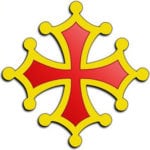
Cathar Cross
The Cathars are thought to have believed that where people gathered in the name of God was considered a church and they did not have elaborate structures like the cathedrals built by the Catholics. They were against any symbolism. Like the earliest Christians, Cathars recognized no priesthood, though they had a hierarchy within their community and a number of rites and ceremonies. They believed in reincarnation and in heaven but not hell. They celebrated the equality between women and men. The main goal of a Cathar was to become a perfect, or member of the Elect. For those perfects who had undertaken a process called the Consolamentum, death was not feared.
Eradication of the Cathars
The Cathars were a relatively small group of peace-loving Christian people concentrated in the South of France. In the 13th century, Pope Innocent III saw them as a threat to the Catholic Church. He set out to eliminate the entire population of Cathars in the name of religion. The seventh crusade, known as The Albigensian Crusades took place during the years 1209–1229. Some say that the king of France, along with the wealthy of the north, recognized an opportunity to take over the lands of the south as long as they did it in the “name of God” under the umbrella of a crusade. This devastating effort is known as the Albigensian crusade, named after the city of Albi, a Cathar center of influence at the time, and now the site of the largest brick cathedral in the world. The cathedral was built by the Catholic Church after the Cathars were suppressed, as a kind of message to others who might dare to challenge the power of Rome.
Cathar Sites to Visit
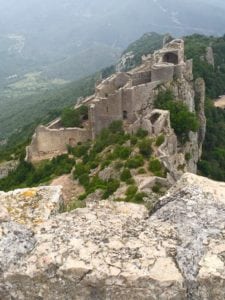
As a traveler in the South of France, it seems like Catharism is very much alive. The Cathar cross is everywhere, on buildings, gates, churches, on souvenir flags, t-shirts and refrigerator magnets. The town of Carcassone is a ancient walled city that was inhabited by the Cathars and today, stands as a throw back to the 12th century.
The truly amazing thing about this region are the Cathar ruins that speckle the landscape, most notably the Cathar “strongholds” that are precariously perched high on mountain ridges, that now lay in various states of ruin. As you drive through the area you can see them atop the mountains. Each can be investigated after a steep-staired climb.
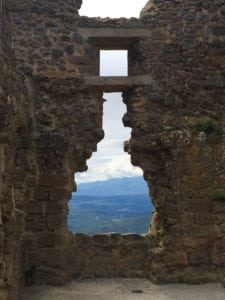
The following is an excerpt from my fellow traveler, Randall Sampson’s blog. He said it better than I ever could:
Most are ruins, swept by wind and loneliness. While many may be more accurately characterized as the remnant of a French military castle built by the successful French forces on the site of the former Cathar stronghold, they nevertheless remain beautiful and poignant places for reflection, be it by the religious, the merely “spiritual,” or the outright secular among us. If you are adventurous, and explore out and around some of their edges, you can risk falling from great heights to your own version of a Cathar demise.
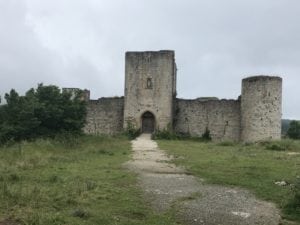
On our 2015 trip to France we hiked up the windy, wet stairs into the clouds surrounding Peyrepertuse and Queribus. The views from these strongholds was incredible, mostly a 360 degree view. Its easy to miss these spectacular sites because they blend well into the mountain they are sitting atop.
This trip we visited the three special sites of Montsegur, Puilaurens and Puivert. I am awestruck by the feat of human engineering and effort that went into building these magnificent structures on top of these mountains.


